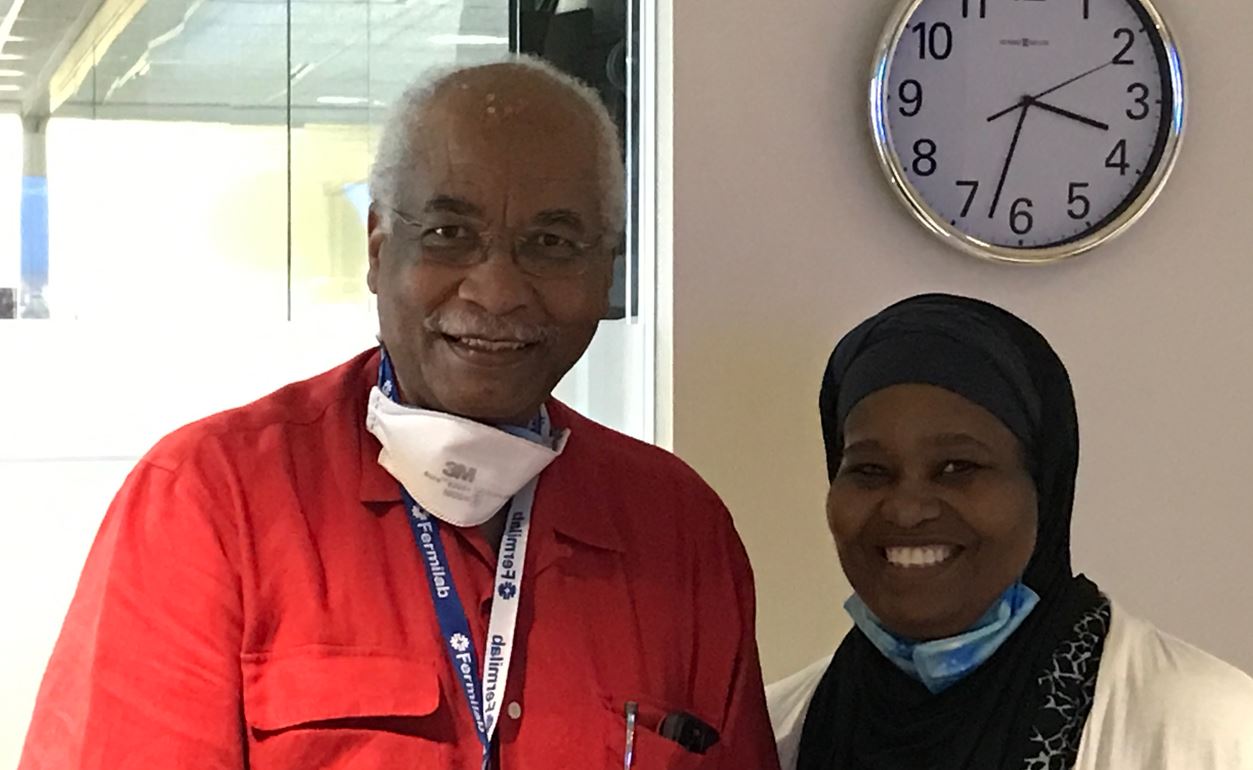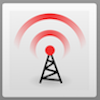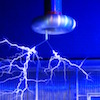Friday Flyer - September 16, 2022
Welcome back to the new school year and to your Friday Flyer. We hope you had a great summer break!

Spotlight on Summer 2022
Summer 2020 was the season the pandemic forced QuarkNet meetings online or on hiatus. In summer 2021, we started to come back. Now, in 2022, we are back. How busy have we been? Well, in summer 2022, Data Camp returned to Fermilab, Coding Camp 1 ran online as it was designed, and the new Coding Camp 2, funded by the Institute for Research and Innovation in Software for High Energy Physics (IRIS-HEP) and leading to more advanced python programming for QuarkNet teachers, was held at Fermilab as well. All of these were fully subscribed. Adam, Jeremy, and the Coding and the Teaching and Learning Fellows ran into some lingering obstacles and ran right through them to success with big assists from Spencer.
At our QuarkNet centers, meetings and workshops were in full force. There were 6 Coding workshops, 3 LHC Data workshops, 8 Neutrino Workshops, and 5 Cosmic Ray Workshops. And: remember that the Higgs discovery was announced at CERN in 2012? This summer marks the ten year anniversary, and so QuarkNet centers hosted 14 Higgs@10 workshops. Behind the numbers: QuarkNet fellows were everywhere, learning about and facilitating workshops. Summer 2022 was one of the busiest ever.
What's more, special projects abounded. At Queensborough Community College in New York, the mentor Raul Armendariz and lead teacher Steve Barton worked on new home-designed DAQ board for their ambitious project to create a large air-shower array across the five boroughs of New York City. Mark Adams and UIC QuarkNet teachers along with student interns at Fermilab worked on Time-of-Flight and Moon Shadow projects, as well as the Non-invasive Archaeometry Using Muons (NAUM) project. At Notre Dame, in addition to the various ongoing research projects, teachers built a set of small, inexpensive Cosmic Watch detectors to try out for classroom use and started work on a new muography project. They were assisted by Miki Ohtsuka, a physics teacher on sabbatical from Waseda Honjo Senior High School in Japan. And associated with the recently re-established University of California at Irvine Center, Joe Wise has been busy setting up a cosmic ray and radio telescope experiment at the nearby Wildwood School.

Maajida did research at Fermilab with Herman when she was a Morgan State undergraduate.

News from QuarkNet Central
QuarkNet Educational Discussions. QED is back and reorganizing. Join the first meeting of the school year at 7 pm CT on Wednesday, September 28. Want to learn more? Sign up! Check the webpage!
World Wide Data Day. W2D2 is coming up on November 10. This is a chance to have a simplified masterclass experience in your school using authentic ATLAS or CMS data! Students can share results with their peers and with physicists from all over the world. To learn more, check out the W2D2 pages. Want more? Have questions? Contact Ken or Shane. Watch this space for registration and other information.
International Cosmic Day (ICD). ICD will be held on Tuesday, November 22. Spend a day with cosmic rays and collaborate internationally! Learn more at the ICD website.

Physics Experiment Roundup
Did you ever wonder about those majorana particles that theorists sometimes talk about? We sure do here at FF. Now a neutrinoless double beta decay experiment designed to probe for such particles is, according to Symmetry, being used to study the very rare decays of tantulum 180. But there is more: APS Physics explains a new experiment to look for neutrinoless double beta decay, CUPID-0 at Gran Sasso National Laboratory in Italy.
To continue speaking of things about which we know little, let's turn to astrophysics: the time between the release of the Cosmic Microwave Background radiation and the formation of the first stars is sometimes called the cosmic dark ages. We have very little data from that era. However, Physics Today explains that new telescopes are probing for cosmic dark age signals below 50 MHz. Such signals will be difficult to detect and analyze but may eventually tell us a lot about a mysterious part of the evolution of the universe..
Fermilab News has two blasts from this summer: the status of Higgs research ten years on and a first demonstration of new particle beam technology. Also from Fermilab: our own Mark Adams gave a terrific public lecture about pyramid muography on August 10.
Not to forget the LHC, we turn to Symmetry to learn how LHCb searches for dark photons. (You read that right.)

Resources
We have a lot of resources stored up from the summer plus a bit more. Let's start with videos by Don Lincoln: one on kinetic energy, another on what energy really is, a third about the Higgs@10, and everyone's favorite astro topic, black holes. Want more cool videos? Try Even Bananas with neutrinos vs. matter and neutrinos and dark matter.
Symmetry has some great offerings as well. Back to the Higgs—with a more human side—in Higgs reverberations and a Higgs quiz. Then we can look at things you might not know about antimatter along with the trouble with neutrinos. Fermilab News gives us a minute with a PIP-II researcher while CERN Bulletin tells the story of 30 years of Microcosm. If you've been to CERN, you've probably been to Microcosm, which closes in two days, on September 18. (It will be replaced.)
Finally, we have articles related to supporting our physics students. Although much of this is at the university level, there are lessons for those of us who teach high school, too. Symmetry explains about connecting with physics and physics identity. Physics Today holds forth on success in physics.

Just for Fun
One QuarkNet staffer finally just saw Top Gun: Maverick. It's great, it's fun, and it's...um...well...it's Star Wars. Just saying.
Autumn is upon just about here for those of us north of the equator. Let's consider what that brings: like the harvest moon (thanks NASA!), football (thanks, Minute Physics!), fall foliage (thanks, Minute Earth!), and pumpkins (thanks, Smithsonian Channel!).
And: xkcd anyone? Sure. Why not? Go for it.
QuarkNet Staff
Mark Adams: adams@fnal.gov
Ken Cecire: kcecire@nd.edu
Spencer Pasero: spasero@fnal.gov
Shane Wood: swood5@nd.edu
